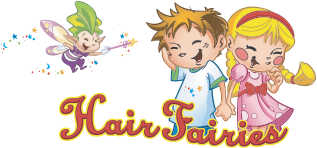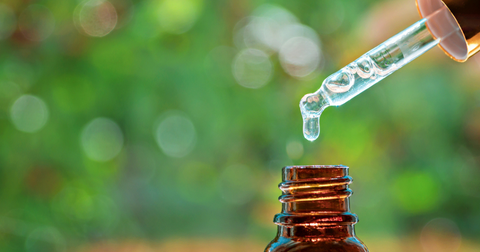Lice infestations, a common childhood nuisance, are enough to send any parent into a state of panic. These tiny, persistent pests not only create discomfort but also the stigma associated with them can be emotionally taxing.
However, before you rush to the nearest pharmacy for a commercial lice treatment laden with chemicals, there's a natural remedy that has been gaining significant attention: tea tree oil.
With its unique properties and history rooted in traditional medicine, tea tree oil could very well be your most effective weapon against these pesky invaders. In this blog post, we’ll explore the reasons why tea tree oil might be your best bet against lice.
What Is Tea Tree Oil?
Tea tree oil, often touted for its versatile medicinal properties, originates from the leaves of the Melaleuca alternifolia tree, native to Australia. For centuries, indigenous Australians from the Bundjalung nation used the leaves of this tree as a traditional remedy for various ailments, from cuts and burns to coughs and colds.
The process to extract tea tree oil involves steam distillation of the tree's leaves. When properly distilled, the resulting essential oil is a clear to pale yellow liquid with a distinctive camphoraceous odor.
The primary active ingredients responsible for its health benefits include terpinen-4-ol, gamma-terpinene, alpha-terpinene, and 1,8-cineole. These compounds give tea tree oil its antifungal, antibacterial, and antiviral properties, which have made it a staple in many households and a revered ingredient in the natural health community.
In today's market, tea tree oil is frequently found in a variety of products, from skincare treatments addressing acne to household cleaning products. Its natural disinfectant properties make it effective in combating a range of microbes, and as we'll explore further, even those pesky lice.
Chemical Properties that Target Lice

Tea tree oil's effectiveness against lice isn't just an old wives' tale; it's rooted in science. The oil contains a plethora of chemical compounds, each contributing in various ways to its overall properties. But when it comes to combating lice, a few of these compounds stand out.
- Terpinen-4-ol: This is the primary active ingredient found in tea tree oil, responsible for most of its antimicrobial properties. Studies have shown that terpinen-4-ol is particularly effective at killing lice. It penetrates the exoskeleton of lice, leading to dehydration and eventually their death.
- 1,8-cineole (Eucalyptol): Another compound present in tea tree oil, 1,8-cineole, is known for its insecticidal properties. While its concentration in tea tree oil isn't as high as terpinen-4-ol, it still plays a role in weakening and repelling lice.
- Alpha-terpineol: This compound, present in smaller quantities, is another that lends to the oil's overall insecticidal properties, enhancing its lice-fighting capability.
While the exact mode of action isn't entirely clear, it's believed that tea tree oil disrupts the nervous system of the lice, making it harder for them to feed and reproduce. The oil may also interfere with the lice's ability to regulate water, leading to their dehydration.
Besides directly targeting adult lice, there’s preliminary evidence suggesting tea tree oil may also inhibit the hatching of nits, although this area needs further research.
Benefits of Using Tea Tree Oil for Lice
Opting for tea tree oil as a primary defense against lice comes with a suite of advantages that extend beyond just its insecticidal properties. Here are some of the key benefits of using tea tree oil for lice treatment:
Natural and Non-Toxic
One of the primary draws of tea tree oil is its natural origin. Unlike many commercial lice treatments that contain synthetic chemicals and pesticides, tea tree oil offers a safer and more natural approach. This means fewer concerns about harmful side effects on the scalp or potential health hazards from chemical residues.
Reduced Risk of Lice Resistance
Over time, lice can develop resistance to commercial treatments, making these solutions less effective. Since tea tree oil works through a multi-faceted mechanism of action, the likelihood of lice developing resistance to it is significantly lower.
Antibacterial and Antifungal Properties
Beyond its lice-combating abilities, tea tree oil is well-documented for its antibacterial and antifungal properties. This can be especially beneficial in cases where lice bites have become infected or there's a risk of secondary bacterial or fungal scalp infections.
Soothing for the Scalp
Anyone who has experienced a lice infestation knows the incessant itchiness that comes with it. Tea tree oil, with its natural anti-inflammatory properties, can help soothe the itchiness and inflammation caused by lice bites, providing much-needed relief.
Pleasant Aroma
Unlike some treatments that come with a strong and sometimes unpleasant odor, tea tree oil has a refreshing, medicinal scent. This can make the treatment process more bearable, especially for children.
Cost-Effective
Given its multipurpose nature, investing in a bottle of high-quality tea tree oil can be cost-effective in the long run. Apart from treating head lice, it can be used for various other skin and hair concerns, making it a valuable addition to any home remedy arsenal.
How to Use Tea Tree Oil for Head Lice Removal

Harnessing the power of tea tree oil against lice requires a specific approach to ensure its efficacy while maintaining safety. Here's a step-by-step guide on how to use tea tree oil treatments to kill head lice:
Dilution Ratios
Tea tree oil is potent and should never be applied undiluted directly to the scalp. A safe dilution is about 2% tea tree oil, which equates to approximately 12 drops of tea tree oil in one fluid ounce (30 ml) of carrier oil, such as coconut or almond oil.
Application Methods
- Direct Application: Mix the diluted tea tree oil with the carrier oil. Apply the mixture to the scalp, hair, base of the neck and behind the ears, ensuring thorough coverage. Leave it on for at least 1 hour, or overnight for better results, covering the head with a shower cap.
- Shampoo: Add a few drops of tea tree oil to your regular shampoo and wash your hair as you normally would. For an intensive treatment, let the tea tree oil shampoo sit on your scalp for a few minutes before rinsing.
- Sprays: Prepare a tea tree oil spray by adding 15-20 drops of tea tree oil to 2 ounces of water. This can be sprayed onto the hair and scalp daily to prevent head lice.
Duration and Frequency
For active infestations, apply the direct application method every other day for a week. It's crucial to follow up with combing using a nit comb to ensure all lice and lice eggs are removed. For preventive measures, using the shampoo or spray method 2-3 times a week can be effective.
Combining with Other Natural Remedies
To enhance effectiveness, tea tree oil can be combined with other essential oils known for their anti-lice properties, such as eucalyptus or lavender oil. Always ensure proper dilution when blending essential oils.
Post-Treatment
After tea tree oil treatment, comb through the hair using a fine-toothed nit comb to remove dead lice and nits. Doing this in bright light or under sunlight can make it easier to spot them.
Keep Lice Away with Tea Tree Oil
Tea tree oil, in conjunction with manual removal, works wonders in lice treatment, but it is even better as a lice preventative. Lice hate the smell - a few drops on the scalp, before you go to work or before your kids go off to school, will keep the pesky buggers away in the first place.
Precautions and Potential Side Effects

Using tea tree oil requires caution and awareness of potential side effects. Its potent nature means that while it can be incredibly beneficial, it can also cause adverse reactions if misused.
Here’s a comprehensive guide on the precautions to take and potential side effects to be aware of:
- Always Dilute: One of the cardinal rules with tea tree oil is never to apply it undiluted to the skin or scalp. Direct application of concentrated tea tree oil can lead to skin irritations or burns. Always use a carrier oil like jojoba, almond, or coconut oil for dilution.
- Conduct a Patch Test: Before using tea tree oil for lice treatment, it's wise to conduct a patch test. Apply a small amount of diluted tea tree oil to a patch of skin on the inner forearm and wait for 24 hours. If there's no redness, itching, or irritation, it's generally safe to use.
- Avoid Ingestion: Tea tree oil is toxic when ingested and can lead to severe symptoms like dizziness, nausea, vomiting, and even hallucinations. So, don’t use it as a mouthwash and always store it out of reach of children and pets.
- Eye, Nose, and Ear Precaution: Ensure that tea tree oil doesn't come in contact with the eyes, inside of the nose, or the inner ears. It can cause significant irritation and discomfort. In case of accidental contact, rinse immediately with plenty of cool water.
- Pregnancy and Breastfeeding: While there's limited research on the effects of tea tree oil during pregnancy and breastfeeding, it's always best to consult with a healthcare professional before its use during these periods.
- Interactions With Medications and Treatments: If you're on any medications or undergoing specific treatments, especially those related to skin conditions or hormonal treatments, consult a doctor before incorporating tea tree oil into your routine.
- Potential Side Effects: Even with proper usage, some individuals might experience side effects, including:
- Skin Irritation: Redness, itchiness, or a burning sensation.
- Allergic Reactions: More severe symptoms like swelling, rash, or blisters indicate an allergic reaction and warrant immediate discontinuation of use and medical attention.
A Natural Solution to Remove Head Lice

For parents and individuals grappling with head lice infestations, tea tree oil presents not only a solution for the immediate problem but also offers preventative benefits that enhance overall hair and scalp health. With its deep roots in traditional medicine and a growing body of modern scientific evidence supporting its efficacy, tea tree oil truly stands out as one of nature's finest solutions against lice.
With natural remedies gaining more recognition, it's essential to buy from trusted brands that prioritize holistic approaches. Hair Fairies is proud to champion natural solutions like tea tree oil. Through years of experience, research, and feedback from our satisfied customers, we stand by the efficacy of tea tree oil, among other healing oils, as a potent solution against lice. Explore our range of plant-based products and treatments.




Comments (0)
There are no comments for this article. Be the first one to leave a message!